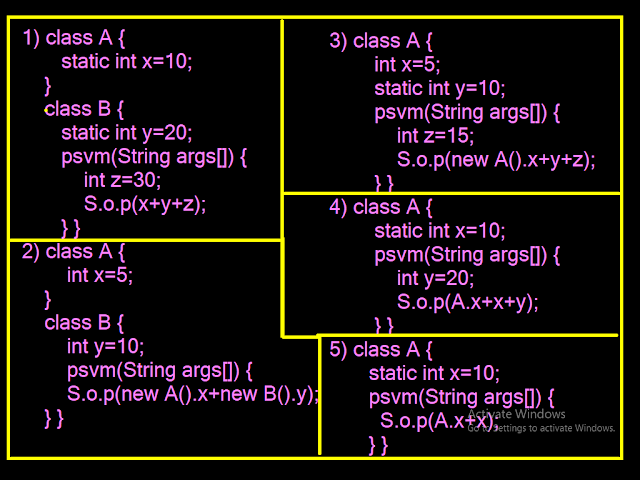Java: Java is a programming language, platform & technology. Java is called as programming language because by using Java, we can write programs. List of programming languages: C, C++, Java, Python, VC++, Visual Basic.Net, C#.Net, Small talk, Simula, Ada, .. etc., Top 5 programming languages are Java, C, Python, C++ & C# C & C++ are popular for developing system softwares Java popular for developing Internet Applications Python popular for developing Artificial Intelligence Applications C# popular for developing Graphical User Interface Applications Identifiers: Identifier is a word and it is used to identify variable, method, class, interface, package, .. etc., It can be a variable name, method name, class name, interface name, package name, .. etc., Rules to declare an identifier: 1) It can be formed by using alphabets(A to Z & a to z), digits (0 to 9), underscore symbol(_) and dollar symbol($). 2) It must begins with alphabet, underscore & d
